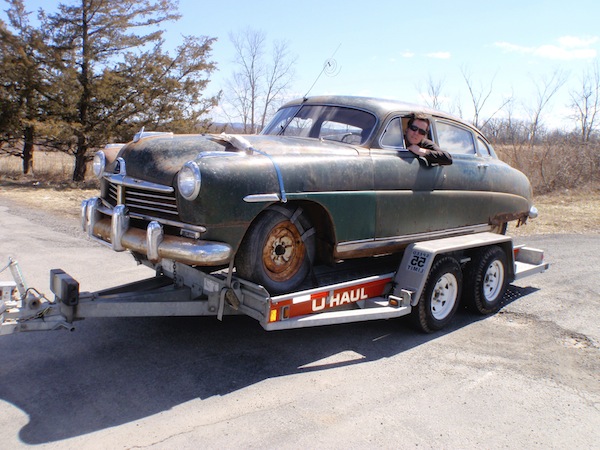
"Go low and slow, dude," suggested a man from Los Angeles, referring to my 1949 lead sled, a Detroit original. I was in Big Sur on the Pacific Coast Highway, in 2014, circumnavigating America to explore the nation’s infrastructure. As I headed south to L.A. on the last leg of my 14,000-mile journey, the phrase "low and slow" stuck in my craw.
In a couple of weeks, Aileen Cho, senior editor of transportation for ENR, and I will be driving "low and slow" across America, from New York City to Los Angeles, through the heart of the country. During this trip, I will be acting as an ENR correspondent, which excites me because ENR has always slaked my thirst for great infrastructure stories just as, for more than 100 years, it has been feeding the built-world frenzy of owners, engineers, contractors, planners, professors and students.
Several months ago, at the suggestion of Bart Ney, the chief spokesman for the Bay Bridge project, Aileen began to write what became an ENR cover story on great megaprojects, "Looking for Legacies" (2/23/15 p. 16). While researching the story, Aileen called me for comment about California's biggest-ever public-works project, the new San Francisco-Oakland Bay Bridge, which I know something about since, in 2012, the state of California commissioned me to write a narrative of the project. (Having read my books on Boston's Big Dig and the interstate highway system, Ney convinced the California Highway Dept. to imbed me with the megabridge project’s senior staff for more than a year.) Aileen and I spoke, and, over an hour later, we were planning this road trip, now called Low & Slow Across America's Infrastructure.
My focus on the tour will be the departments of public works, or DPWs. The men and women who make up these government task forces are, in my opinion, unsung heroes in the struggle that has become the nation’s infrastructure crisis. The men and women of DPWs are outgunned, having anemic funding and old equipment. Their ranks are thin. Somehow, they hold together U.S. cities, towns and villages with a can-do spirt. I want to learn from them.
Why will we be driving this 1949 Hudson? She is a rolling metaphor. Our Hudson is as old, rusty and energy-defunct as America’s infrastructure: The lights dim when the horn is honked. When accelerating uphill in the rain, the wipers stall. The Hudson has half the power, or half the electricity, needed: 100 horses and 6 volts. U.S. roads, bridges and transit systems are as aged as the Hudson. Our drinking-water facilities, schools and dams are as challenged by everyday uses as the Hudson's systems will be on our cross-country road trip. As the car mirrors what America's vital systems are looking like today, Cho and I are method-acting the part of America’s failing infrastructure.
Dr. Per Christiansen—my mechanic, mentor and friend—and I bought the classic on eBay for $2,500. We spent two years in Per’s garage restoring "Mrs. Martin"—she was christened with the name of her only previous owner. Her parts are all original. A flat-head-six engine, bias-ply tires—all Hudson parts from the 1940s. I call Per "the Hudson Whisperer." He has been the man behind the curtain who keeps us rolling in what looks like a wreck of a car. However, this is not our first rodeo. Over the past decade, Per and I have been road-tripping throughout the Lower 48 in our Hudsons. At first, we rolled in a shiny 1951 Pacemaker, which often was mistaken for its more famous sister, the Hudson Hornet. We did this while promoting my book, "The Roads That Built America," which celebrates the 50th anniversary of the Eisenhower-era interstate system. Now, Per, Aileen and I are activists in a rusty relic who are advocating for the rebuilding of America.
As the first low-rider Motortown produced, Mrs. Martin is the automobile that defined America’s might. This 1949 Hudson Commodore is the exact model in which novelist Jack Kerouac wrote much of "On The Road." Mrs. Daisy of "Driving Mrs. Daisy" was driven in a 1949 Commodore. Now, we’re challenging Americans to take what was great—our post-World War II spirit—and improve on it. It’s time for a new ride: infrastructure that’s needed for us and our future generations to succeed. And as our forefathers wanted, to aid in our pursuit of happiness.





















Post a comment to this article
Report Abusive Comment